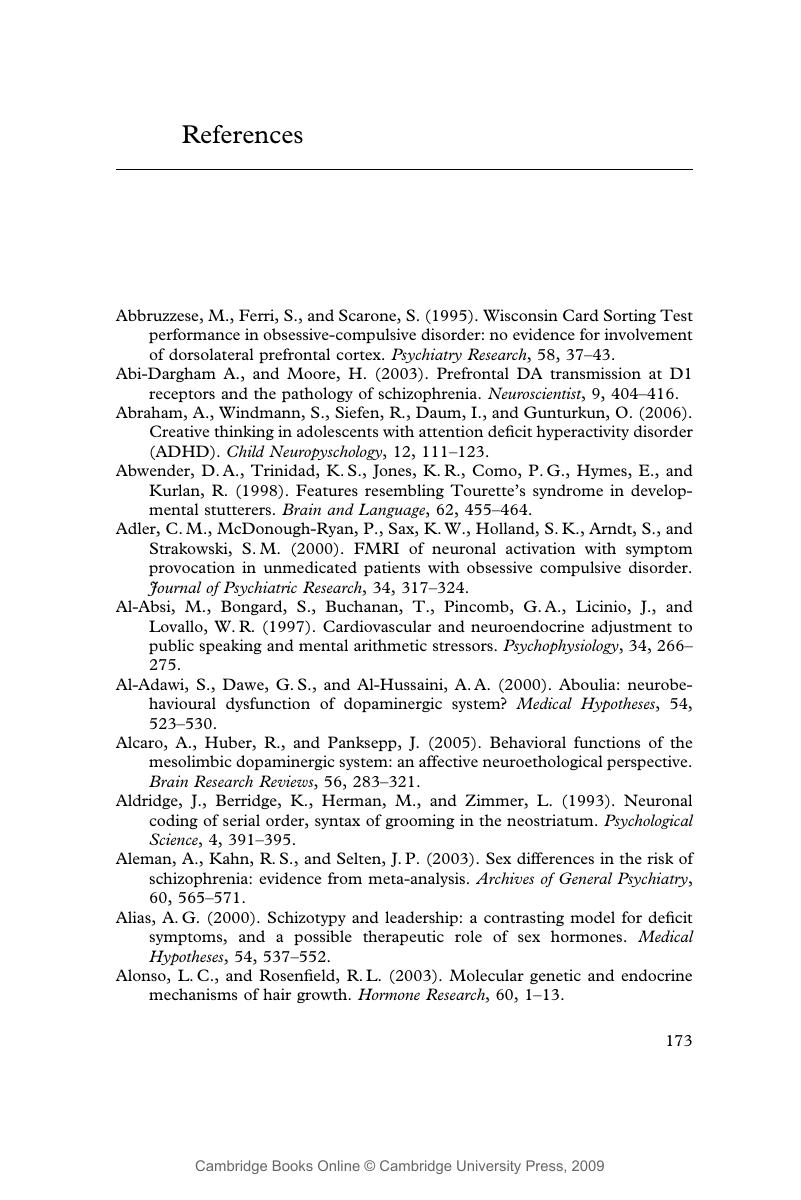Book contents
- Frontmatter
- Contents
- List of figures
- List of tables
- Acknowledgments
- 1 What makes humans special?
- 2 Dopamine in the brain
- 3 Dopamine and behavior
- 4 Dopamine and mental health
- 5 Evolution of the dopaminergic mind
- 6 The dopaminergic mind in history
- 7 Relinquishing the dopaminergic imperative
- References
- Index
- References
References
Published online by Cambridge University Press: 27 July 2009
- Frontmatter
- Contents
- List of figures
- List of tables
- Acknowledgments
- 1 What makes humans special?
- 2 Dopamine in the brain
- 3 Dopamine and behavior
- 4 Dopamine and mental health
- 5 Evolution of the dopaminergic mind
- 6 The dopaminergic mind in history
- 7 Relinquishing the dopaminergic imperative
- References
- Index
- References
Summary

- Type
- Chapter
- Information
- The Dopaminergic Mind in Human Evolution and History , pp. 173 - 207Publisher: Cambridge University PressPrint publication year: 2009



